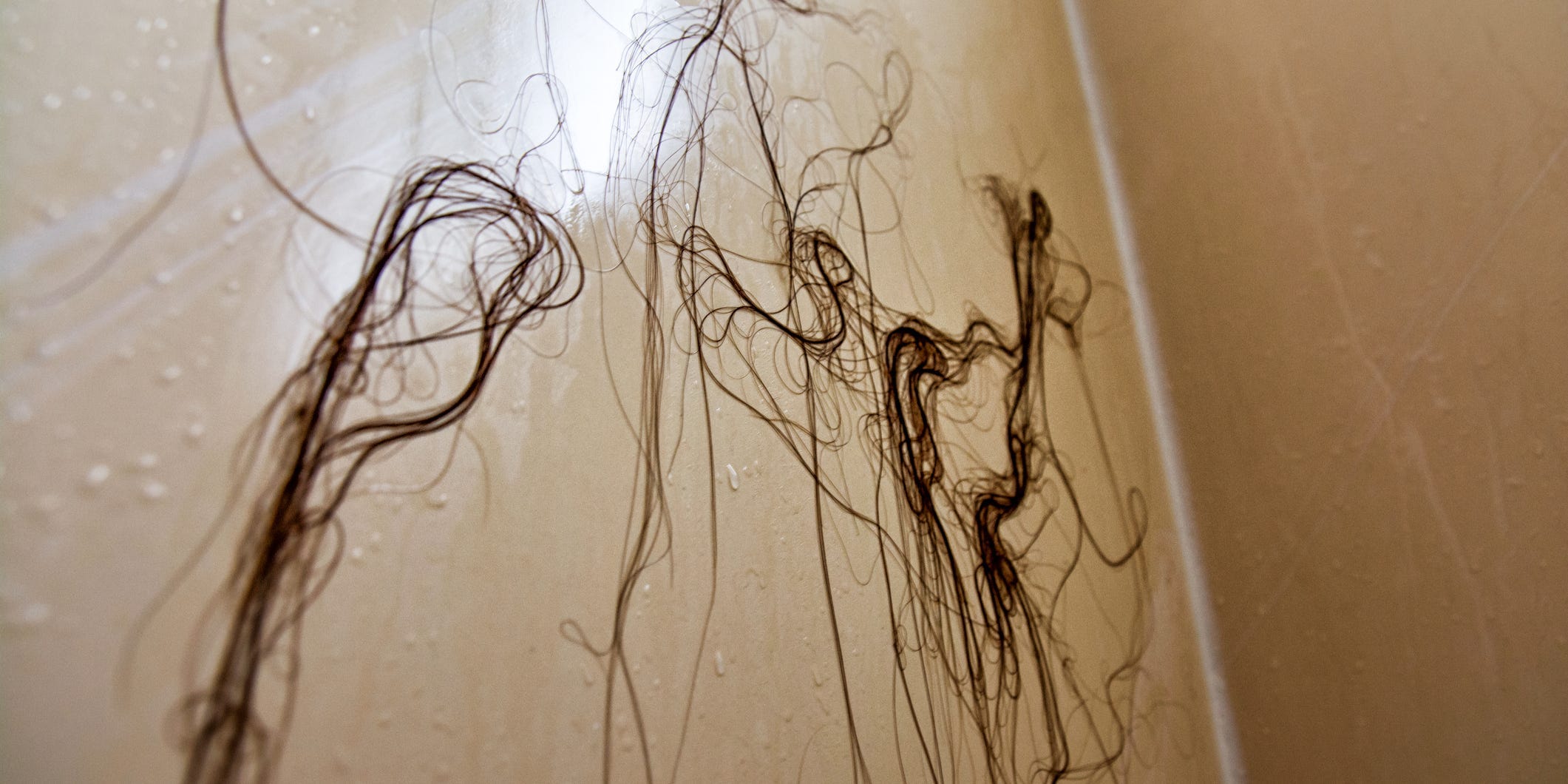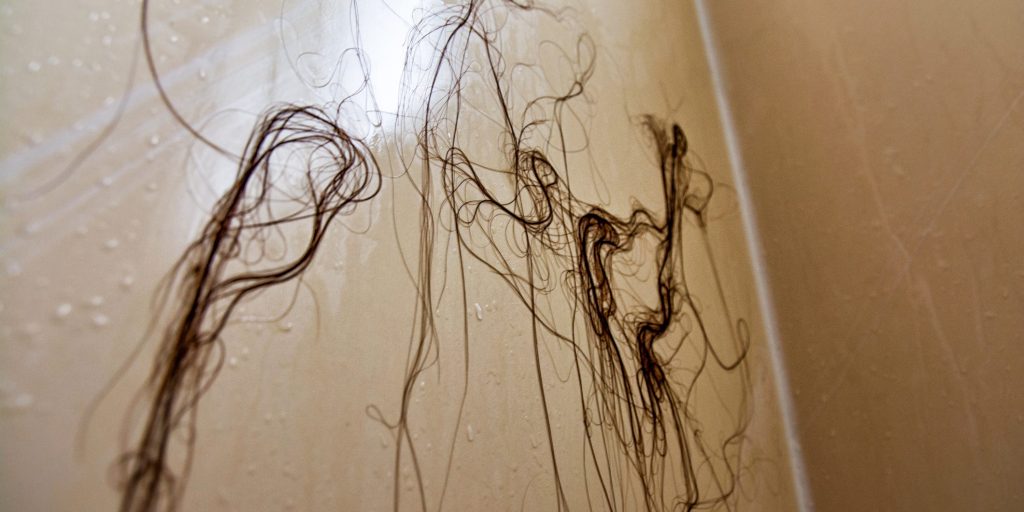
harpazo_hope/Getty Images
- If your hair keeps falling out, then it may be due to androgenetic alopecia or alopecia areata.
- It could also be because you aren't getting enough protein, zinc, and iron in your diet.
- Wearing tight hairstyles like buns can also damage your hair follicles and cause shedding.
- Visit Insider's Health Reference library for more advice.
It can be very alarming if you start noticing more hairs on your pillow or seeing bald spots in the mirror. There are many possible causes for hair loss, both serious and benign. The good news is that there are also many solutions. Here are five common causes of hair loss and how to fix it.
1. Telogen effluvium
Telogen effluvium, sometimes referred to as stress shedding, is a common cause for hair loss, says Susan Bard, MD, board-certified dermatologist at Vive Dermatology.
When you experience an intense period of emotional or physical stress, your body goes into survival mode. It stops non-essential functions to preserve nutrients – and growing hair is something your body deems non-essential, says Bard.
But you typically won't experience shedding until three to six months after the period of stress because it takes time for the stressor to shift the hair cycle.
This can be caused by many stressors, Bard says, such as:
- Fever
- Illness
- Thyroid or organ dysfunction
- Surgery
- Medication changes
- Pregnancy or postpartum
- Psychological stressors such as a major life change
How to fix it:
There are a couple of ways to address hair loss caused by telogen effluvium, Bard says, including:
- Hair supplements: Biotin, a type of B vitamin, can help improve hair growth.
- Patience: Within several months, the issue should resolve on its own.
2. Hair styling
Wearing styles that pull on the scalp, like tight buns or ponytails, cause traction alopecia. This happens because constant pulling on the hair can cause hair breakages as well as inflammation and scarring.
Traction alopecia can sometimes result in permanent hair loss through destruction of the hair follicle, says Strachan.
How to fix it:
To prevent further damage and hair loss, try out different hairstyles that are easier on the scalp and avoid using chemicals on your hair.
3. Malnourishment
If you aren't getting enough nutrients from your diet, this can result in hair loss, says Dina Strachan, MD, board-certified dermatologist and hair loss expert at Aglow Dermatology. This is most common in people who are deficient in zinc, iron, and protein.
Protein in particular is crucial for hair growth. If your body is low on protein, it will prioritize using the protein for more essential bodily functions rather than hair growth.
How to fix it:
Blood tests can identify any deficiencies that may explain your hair loss. If a deficiency is the root cause, you can speak with your doctor about reversing the hair loss with diet and supplements.
4. Androgenetic alopecia
This condition, also known as male or female pattern baldness, is extremely common. It's estimated to affect 50 million men and 30 million women in the US.
Androgenetic alopecia is often genetic and will usually start sometime after puberty and before age 40, says Strachan.
How to fix it:
There are options for treating androgenic alopecia, including:
- Over-the-counter treatments: A popular over-the-counter treatment is Rogaine, which is a topical remedy that works by stimulating your hair follicles and increasing the size of them and making your hair thicker.
- Medication: Finasteride is a prescription medicine that inhibits a hormone that stunts hair growth. Just keep in mind that typically only men and menopausal women are prescribed finasteride, due to the fact that it can cause birth defects for women of childbearing potential, says Strachan.
- Platelet-Rich Plasma (PRP): During the PRP procedure, platelets of your own blood are injected into your scalp, which aids in tissue renewal and subsequent hair growth.
- Surgical hair transplant: This involves harvesting healthy hair and replanting it in areas of hair loss.
5. Alopecia areata
An autoimmune disease called alopecia areata causes the body to wrongfully attack the hair cells, leading to hair loss, says Bard. This condition affects around one out of 500-1000 people in the US. Usually, there is a genetic predisposition to developing this disease, but it can also be triggered by emotional or physical trauma.
"It typically presents as discrete patches of hair loss on the scalp or beard and may progress to the entire body in very severe cases," says Bard. Hair will typically grow back in the bald patches, but it may fall out again. It depends on the individual.
How to fix it:
As soon as you notice a bald patch, you should see a dermatologist, says Bard. Alopecia areata must be diagnosed by a doctor, and sometimes a biopsy is needed to confirm the diagnosis. Bard says treatments include:
- Steroid injections
- Topical medications
- Systemic immunomodulators (medications that affect the immune system in a way that improves overactivity that maybe causing the problem)
Insider's takeaway
Determining the reason why your hair is falling out in the first place is crucial to finding the right treatment that will reverse the process. See a dermatologist or a trichologist (who focuses on the hair and scalp) when you notice excessive hair loss so that you can get your beautiful hair back.
